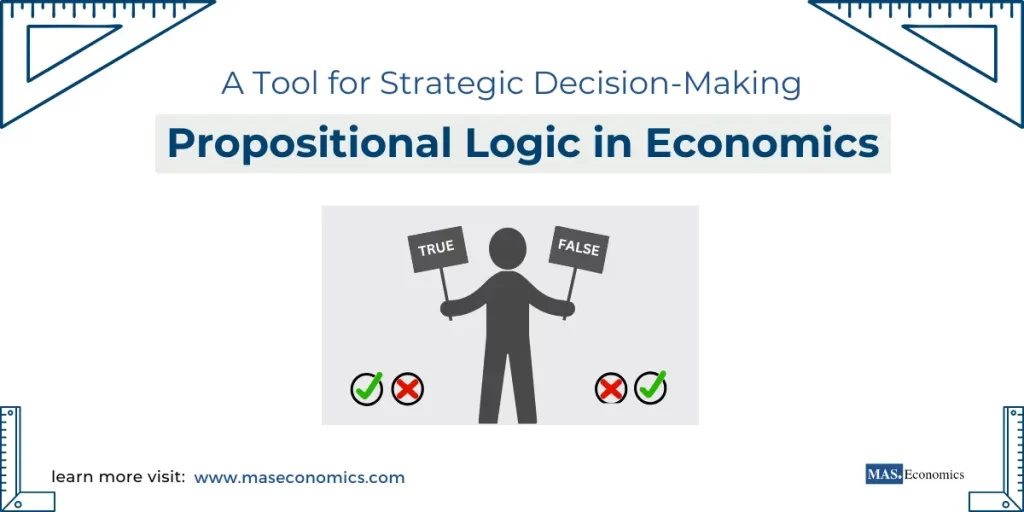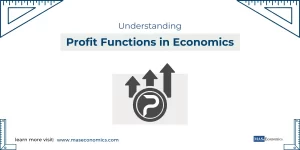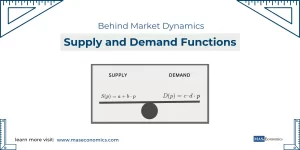Propositional logic might sound like a purely philosophical concept, but its importance in economics cannot be overstated. It deals with statements that are either true or false and helps analyze how these statements interact to determine outcomes. In economics, it serves as a foundational tool for evaluating decisions under conditions of certainty, developing strategic models, and analyzing complex situations involving multiple interdependent actors.
What is Propositional Logic?
Propositional logic is a type of formal logic where statements, called propositions, are either true or false. It’s a powerful tool in economics for modeling decision-making and evaluating the implications of various strategies. Propositions are represented by variables, often denoted by A, B, C, and so on. Logical operators such as and (conjunction), or (disjunction), and if-then (implication) are used to link these propositions and analyze their relationships.
For instance, consider two economic statements:
A: “The interest rate increases.”
B: “Investment decreases.”
In propositional logic, we can explore how these two events are related, which helps us determine causal relationships and evaluate scenarios in economic models.
Key Components of Propositional Logic
Negation (¬ϕ)
Negation is used to represent the opposite of a statement. If A is true, then ¬A (read as “not A”) is false, and vice versa. This is useful in economics for representing scenarios where a condition does not hold.
Example:
A: “Unemployment is increasing.”
¬A: “Unemployment is not increasing.”
By using negation, we can model both potential outcomes of an economic situation, allowing us to evaluate alternative scenarios.
Conjunction (ϕ ∧ ψ)
Conjunction involves the word and and is used to link two statements that must both be true for the entire proposition to hold.
Example:
A: “Inflation is below target.”
B: “The central bank lowers interest rates.”
A ∧ B: Both inflation is below target and the central bank lowers interest rates.
This can be used to model policy responses—if both conditions are true, certain economic decisions or policies might be enacted.
Disjunction (ϕ ∨ ψ)
Disjunction uses the word or and indicates that at least one of the statements must be true for the entire proposition to hold.
Example:
A: “Consumer spending increases.”
B: “Government spending increases.”
A ∨ B: Either consumer spending or government spending (or both) increases.
This is particularly helpful in fiscal policy analysis when considering different avenues that can lead to economic growth.
Implication (ϕ ⇒ ψ)
Implication is one of the most critical aspects of propositional logic in economics. It is used to indicate that if A is true, then B must also be true. A is called the premise, while B is the conclusion.
Example:
A: “The government increases subsidies.”
B: “Agricultural production increases.”
A ⇒ B: If the government increases subsidies, then agricultural production will increase.
Implications help economists build cause-and-effect relationships, which are vital for predicting the consequences of policy changes.
Equivalence (ϕ ⇔ ψ)
Equivalence states that two propositions are true or false simultaneously. If A is true, then B is true, and vice versa.
Example:
A: “Demand is elastic.”
B: “A small price reduction leads to a significant increase in quantity demanded.”
A ⇔ B: Demand is elastic if and only if a small price reduction leads to a significant increase in the quantity demanded.
Truth Tables: Evaluating Economic Statements
In propositional logic, truth tables are used to determine the validity of complex logical statements. Truth tables list all possible combinations of truth values for given propositions and show the resulting truth value of the entire expression.
Consider two propositions:
A: “Interest rates are high.”
B: “Investment is low.”
| A (Interest rates high) | B (Investment low) | A ∧ B (High rates and low investment) | A ∨ B (High rates or low investment) |
|---|---|---|---|
| True | True | True | True |
| True | False | False | True |
| False | True | False | True |
| False | False | False | False |

|
|||
Truth tables are instrumental in understanding the relationships between multiple economic factors and help assess the impact of various combinations of economic conditions.
Applications of Propositional Logic in Economics
1. Decision Making Under Certainty
Propositional logic is widely used to evaluate decisions where the outcomes are certain. By structuring decisions logically, economists can evaluate whether the combination of different policies will achieve a desired outcome.
Example: Consider a government deciding whether to implement two policies, A and B. Policy A is lowering taxes, and policy B is providing subsidies to the manufacturing sector. Using logical operators, the government can model different scenarios:
A ∧ B: Both lowering taxes and providing subsidies are implemented.
A ∨ B: Either lowering taxes or providing subsidies is implemented.
This allows policymakers to anticipate the effects of various combinations of actions.
2. Game Theory and Strategic Decision Making
In game theory, propositional logic plays a central role in determining optimal strategies for players. A player’s decisions can be modeled using propositions, and the interactions between players can be understood through logical relationships.
Consider a classic example in game theory: the Prisoner’s Dilemma. Two players, Player A and Player B, each have two options: cooperate (C) or defect (D). The outcomes can be represented using propositional logic to analyze which strategies lead to optimal payoffs.
A ⇒ B: If Player A defects, Player B may also choose to defect in response.
¬A ∧ ¬B: Both players cooperate, leading to the best collective outcome.
Propositional logic allows game theorists to model these scenarios systematically and determine equilibrium points, such as the Nash Equilibrium, where no player has an incentive to change their strategy given the strategy of the other player.
3. Evaluating Economic Outcomes
Logical operators are often used to evaluate economic outcomes based on the fulfillment of certain conditions. Consider the situation where a central bank needs to decide on monetary policy. Let:
A: “Inflation exceeds target levels.”
B: “The central bank raises interest rates.”
The implication A ⇒ B helps in setting rules for action—if inflation exceeds target levels, then interest rates should be increased. This logical approach to decision-making ensures consistency in policy responses and helps set clear guidelines for economic stability.
Benefits of Using Propositional Logic in Economics
Clarity in Decision Making: Propositional logic helps structure complex economic scenarios into simple true/false statements, making the decision-making process clearer.
Predictive Power: Logical models can be used to predict outcomes based on given premises, helping policymakers anticipate the consequences of their actions.
Versatility: Propositional logic is versatile and can be applied in various fields within economics, from microeconomic analysis to macroeconomic policy and game theory.
Conclusion
Propositional logic serves as a fundamental tool in economics, allowing for structured decision-making and strategic evaluation of outcomes. By breaking down complex situations into simple propositions and using logical connectors, economists can build models that predict behavior, analyze policy impacts, and determine optimal strategies in competitive environments.
FAQs:
What is propositional logic, and how is it applied in economics?
Propositional logic involves statements that are either true or false. In economics, it models decision-making, strategic interactions, and cause-effect relationships. For example, statements like “Interest rates increase” and “Investment decreases” can be logically connected to analyze outcomes.
How do logical operations like negation, conjunction, and disjunction work in economics?
Negation (¬A) expresses the opposite of a statement, like “Unemployment is not rising.” Conjunction (A ∧ B) requires both statements to be true, such as “Inflation is below target, and the central bank lowers rates.” Disjunction (A ∨ B) means at least one condition is true, such as “Either consumer or government spending increases.”
What is the role of implication in economic policy and analysis?
Implication (A ⇒ B) links cause and effect, such as “If the government increases subsidies, agricultural production rises.” This logical tool ensures policymakers account for predictable outcomes when setting policies.
How are truth tables useful for evaluating economic scenarios?
Truth tables display all possible truth-value combinations of multiple conditions, helping economists assess outcomes. For instance, they help predict whether investment will fall if interest rates rise or if one condition alone can achieve a desired outcome.
How does propositional logic contribute to game theory and strategic decision-making?
In game theory, logic models strategies and outcomes. For example, if Player A defects (A), Player B might also defect (B), represented as A ⇒ B. Alternatively, both players might cooperate, expressed as ¬A ∧ ¬B. This logic helps identify Nash equilibria, where no player benefits from changing strategy unilaterally.
How do policymakers use propositional logic in economics?
Policymakers use logical frameworks to set rules and ensure consistency. For example, if inflation exceeds target levels (A), the central bank raises interest rates (B), represented as A ⇒ B. This predictable decision-making promotes stability.
Thanks for reading! Share this with friends and spread the knowledge if you found it helpful.
Happy learning with MASEconomics



